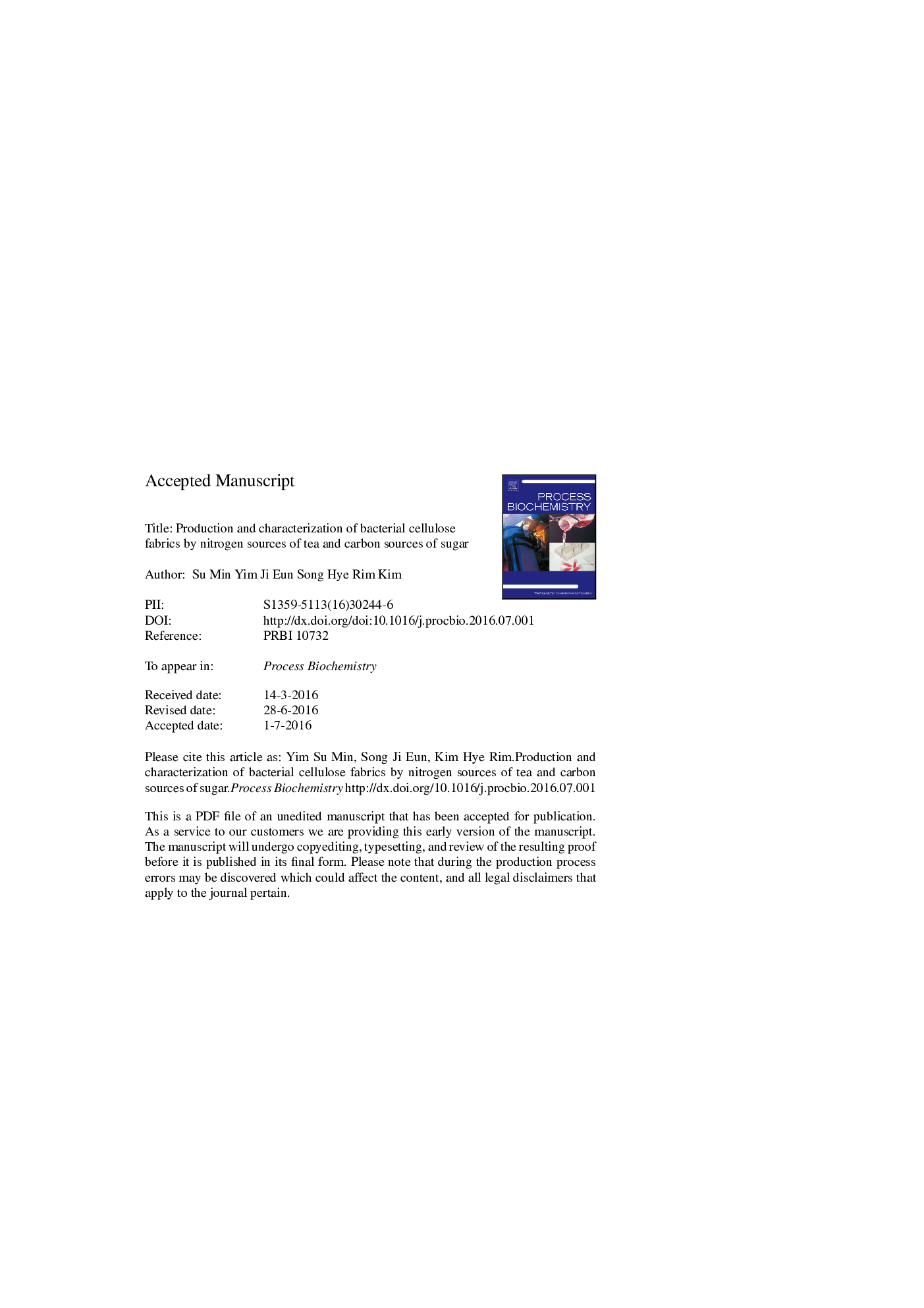| Article ID | Journal | Published Year | Pages | File Type |
|---|---|---|---|---|
| 4755026 | Process Biochemistry | 2017 | 35 Pages |
Abstract
This study aims at producing bacterial cellulose (BC) to develop a new type of eco-friendly and sustainable fabric. The main factors, nitrogen and carbon sources, in the medium were controlled to produce a fabric that had both thickness to maintain the shape and smooth surface. We evaluated the effects of four different tea and carbon sources of four different sugars on the production and characterization of BC fabrics, such as the production yield, fabric thickness, appearance, and cellulose structures. The highest production yield was obtained when green tea and sucrose were used as nitrogen and carbon sources, respectively. The thickness and the roughness of the BC fabric were observed by atomic force microscopy to be 0.213 ± 0.01 mm and 155.56 nm, respectively. By XRD and SEM morphology of the BC fabric, the highest crystallinity (74.26 ± 5.24%) was observed in the defined cellulose fibril network that was formed. The Fourier transform infrared spectra of BC fabrics showed the characteristics of cellulose. It was found that the BC fabric had a tensile strength that was two times stronger than top-grain leather although both had similar appearance and thickness.
Related Topics
Physical Sciences and Engineering
Chemical Engineering
Bioengineering
Authors
Su Min Yim, Ji Eun Song, Hye Rim Kim,
